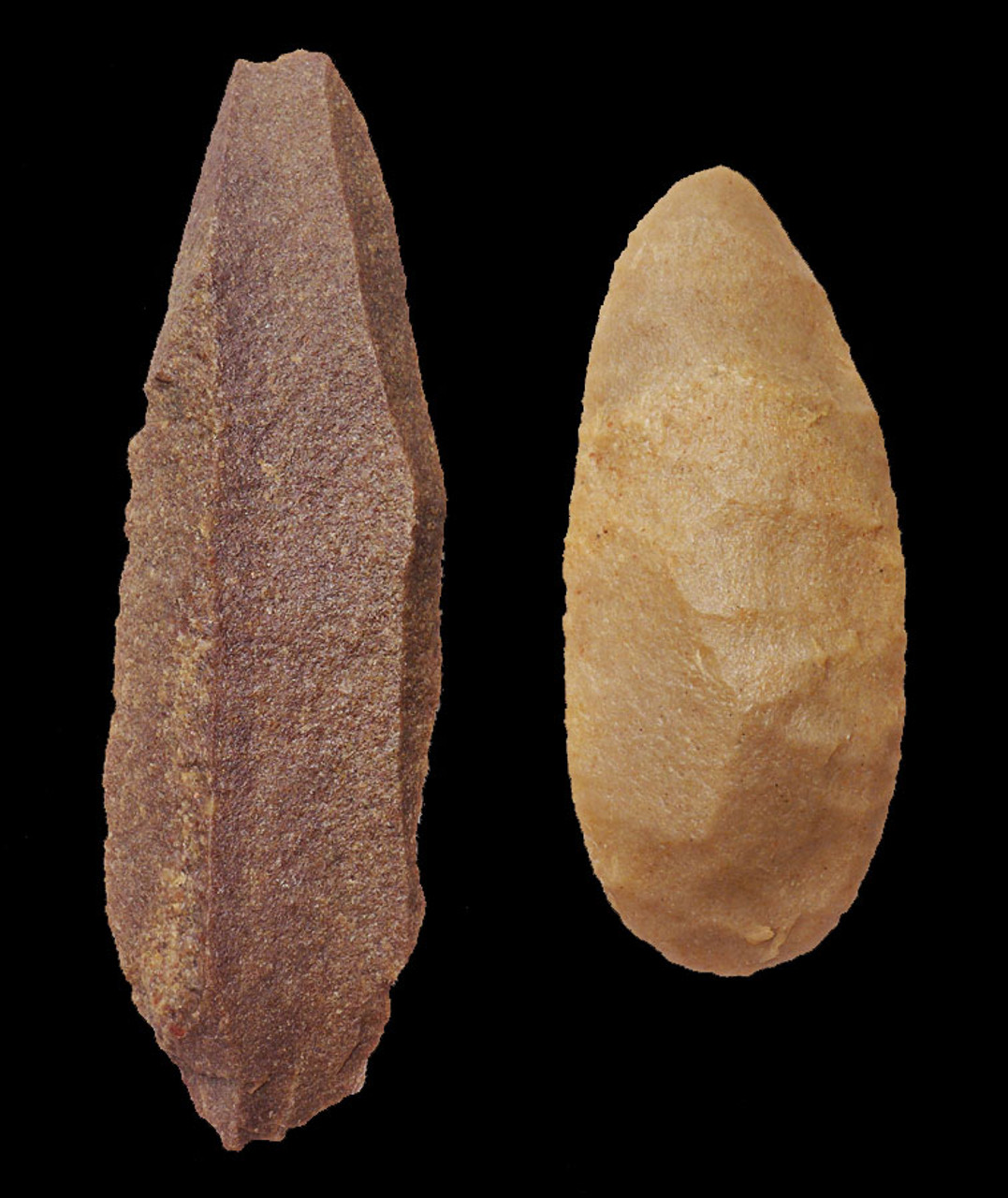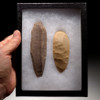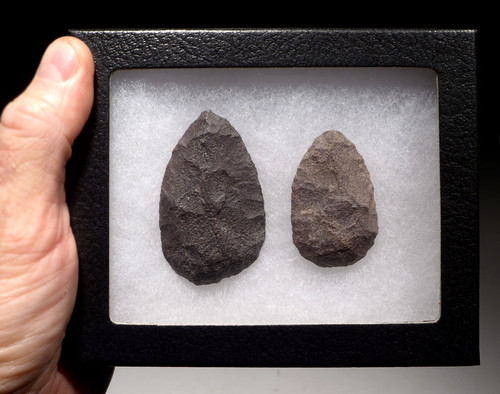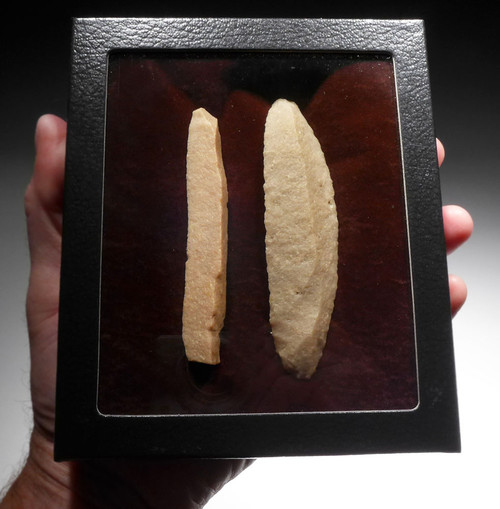Product Description
On a dinosaur fossil-hunting expedition in 2000 by a team of scientific explorers led by Paul Sereno, a paleodune and ancient lakebed site was discovered that yielded over 200 ancient burials of Kiffian and Tenerian people. The scientific findings showed that this area was once a humid lake region that was home to a hunter-fisher-gatherer people. The area became known as the "Green Sahara" for its once fertile and habitable landscape. Noted paleontologist, Dr. Paul Sereno, famous for other Saharan dinosaur discoveries, shot into the archaeological spotlight with his discovery of the ancient lakebed cemetery at Gobero in Niger in the year 2000. Interred in the many burials were numerous stone tools, ceramics, shells, beads and bone harpoons typical for the lifestyle of these ancient people of the Green Sahara. This exceptional AUTHENTIC artifact is similar to the specimens found at Gobero. It comes from the same period and Tenerian Neolithic Culture of that famous discovery.
Made of beautiful opposing colors of quartzite, this is an EXCEPTIONAL pair of UNIFACIAL BLADES. Each is an example of the two main differing typologies of all Neolithic cultures - CORE STRUCK PRISMATIC BLADES and CORE STRUCK KNAPPED BLADES. Each is a work of perfection in the execution of the toolmaker's skill While they may look cruder than other Neolithic cultures, consider that that they were flaked out of quartzite - a stone nearly impossible to shape so well. The flaking is amazing and hard to see, for such a tough stone to work with. Most flaked stone objects from the region were fashioned out of quartzite which is EXTREMELY difficult to flake to such detail and fineness, unlike flint or chert. Both are expertly made and complete with no damage, repair or restoration. Highly recommended for advanced collections as when we are sold out of this collection, they will be gone forever.
The Tenerian Neolithic people have left behind some of the most amazing flaked artifacts of any African Neolithic culture. Large, very thin discoidal, ovate and leaf-shaped scrapers and blades, are their hallmarks of a highly skilled and advanced stone tool industry. The piece offered here is exemplary of that culture and their achievement!
We are very fortunate to have acquired an old French collection of these artifacts, years ago. Nevertheless, we have a very limited amount and once sold, we most certainly will never be able to replace them. Objects from the Tenerian African Neolithic culture are so rare that not even most major museums have a single object in their collection.
HISTORY
The Earth has been warming and cooling for millions of year, well long before humans were on the planet. One of the most dramatic examples of climatic change in the last 10,000 years is the desiccation of what is now the Sahara desert. Prior to as recent as 3000 B.C., the South Central Sahara region in Africa was a humid lake savanna. It was home to a thriving culture of ancient humans known as the Tenerians and before them, the Kiffians. The occupation of this area by these two peoples occurred continuously from around 7700 B.C. to the drying of the Sahara in 2500 B.C..
In the final Pleistocene and early Holocene Periods around 10,000 years ago, the South Central Sahara Desert was once a highly favorable environment for hunters, gatherers and pastoralists. Freshwater lakes existed between the dunes in what is now the Tenere region, Lake Chad was eight times its current size, the highlands supported Mediterranean forest trees, and a diverse variety of both large and small fauna flourished there. The slow drying out process of the Sahara, began 7,000 years ago and ended 4500 years ago resulting in the barren conditions that exist to this day. As we progress through time from the end of the Pleistocene towards the end of the Neolithic Period there, we see humans relying more on meat from raised animals as opposed to hunted animals that once roamed wild in the formerly Green Sahara.
 US DOLLAR
US DOLLAR
 EURO
EURO
 AUSTRALIAN DOLLAR
AUSTRALIAN DOLLAR
 CANADIAN DOLLAR
CANADIAN DOLLAR
 POUND STERLING
POUND STERLING
























